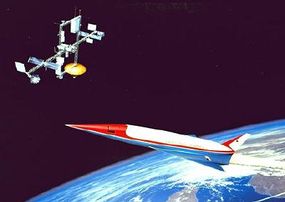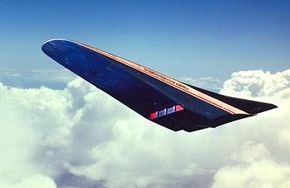Future SSTs
For a time, it seemed as though the air travel industry was headed in the direction of more supersonic options. For example, President Ronald Reagan called for a program to develop a hyperspace transport or National Aerospace Plane capable of going from New York to Tokyo in two hours.

Such planes would have to enter outer space in a suborbital flight. They would have to develop the air-breathing rocket engines necessary to achieve the appropriate speeds and deal with the intense heat of re-entry, much like the space shuttle.
Advertisement
However, none of these options ever became commercially viable, making the Concorde and the the Tu-144 the only SSTs that made commercial flights. For more information on SSTs and related topics, check out the links below.
Related HowStuffWorks Articles
- How Airplanes Work
- How Gas Turbine Engines Work
- How Becoming an Airline Pilot Works
- How Airlines Work
- How Airports Work
- How Airline Freight Works
- How Sonic Cruisers Will Work
- How Air-breathing Rockets Will Work
- How Space Planes Will Work
- How Space Shuttles Work
- What causes a sonic boom?
- How do afterburners work?
- Can you explain pressurized airplane cabins?
- How much fuel does an international plane use for a trip?
- Why do those long white clouds form behind jets flying high overhead?
- How does an oxygen canister work?
- Do commercial jets have locks on the doors and ignition keys?
- What is a nautical mile, and how does it differ from a normal mile and a kilometer?
More Great Links
Technical Information
- The Unofficial Concorde Home Page
- Concorde SST
- Jane's Transport: AEROSPATIALE BAC CONCORDE
Other SSTs
- The Tu -144LL: A Supersonic Flying Laboratory
- Hiller Aviation Museum: The Story of America's First Supersonic Transport
Future of SSTs
Aeronautics
